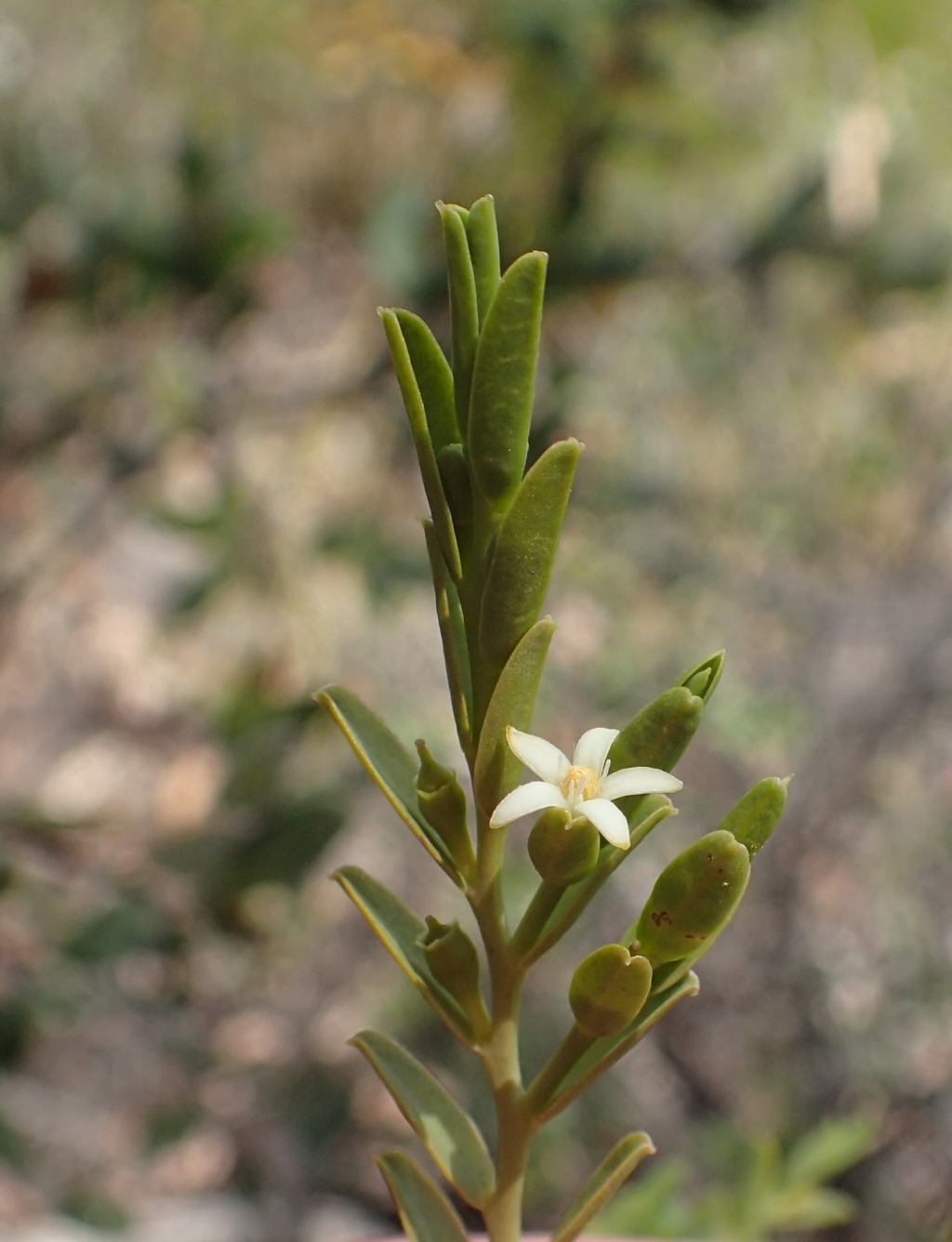Olacaceae
Trees, shrubs or scramblers, mostly hemiparasitic on the roots of other plants. Leaves alternate, simple, entire; stipules absent. Inflorescences axillary umbels, racemes or clusters, or rarely flowers solitary. Flowers regular, usually bisexual, or unisexual on dioecious plants; calyx small, more or less cupular, free or adnate to disk or ovary, persistent and often enlarging in fruit; sepals 3–6, inconspicuous; petals 3–6, free or partly united lower down, much larger than calyx, hypogynous or nearly so; stamens usually as many as petals, rarely 2–5 times as many, free, opposite petals and sometimes fused to their bases, often some reduced to staminodes, anthers 2-celled, opening by longitudinal slits; ovary superior, usually free, sometimes slightly immersed in the disc, 1- or imperfectly 2–4-celled, ovules 1 per cell or part cell, pendulous, style simple, stigma 2–5-lobed. Fruit a drupe or nut, usually fleshy, often red; seed single, erect, embedded in upper part of albumen.
As generally treated in Australia, about 25 genera with c. 250 species, chiefly in tropical and subtropical regions; 3 genera in Australia, but Ximenia and Anacolosa sometimes included in Ximeniaceae and Aptandraceae respectively.
Jeanes, J.A. (1999). Olacaceae. In: Walsh, N.G.; Entwisle, T.J., Flora of Victoria Vol. 4, Cornaceae to Asteraceae, pp. 25–26. Inkata Press, Melbourne.
 Spinning
Spinning

